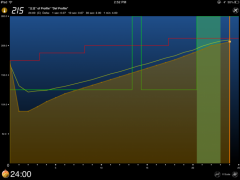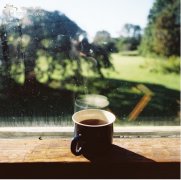Classification of roasting degree of coffee
New England baking: light brown, bean flour dry.
American Roast: Medium brown, bean flour dry.
Viennese: Medium dark brown with a few drops of coffee fat on the beans.
French: Moderately dark brown bean flour with a thin coffee fat.
Espresso Roast: Dark brown, beans may have only a thin layer of coffee fat or a thick layer of coffee fat depending on the level of roasting.
Italian Baking: Dark brown, close to black, the bean flour is shiny, most bakers bake to this level is the darkest.
Dark French or Spanish: Very dark brown, quickly turning black, and extremely oily.
Traditional American definition of baking pattern name
There is also a naming convention for baking patterns that has been used in the United States since the late 19th century, most of which are listed in the following order:
Cinnamon: Very light brown.
Light: The lightest level of American baking.
Medium baking.
Medium High: American baking lasts the longest to this point.
Cityhigh: A little deeper than American baking.
FullCity Roast: Deeper than the former, the bean noodles sometimes have a few drops of coffee fat.
Dark baking: Dark brown, bean-flour glossy, surrounded by the level of Espresso baking or French baking in the regional classification.
Heavy-baked Very dark brown, bean-flour glossy, surrounded by Italian baking.
Among these many names, the only one that is still often seen today is the name Deep City Baking, which is a baking pattern that is deeper than the American baking of the mid-20th century.
Filling in the gaps in traditional baking pattern classification with numbers: caramelization level classification and SCAA's color scale discrimination system
After reading the previous two categories of baking pattern classification, are you confused? Yes, in order to solve these two problems, the Specialty Coffee Association of America (SCAA) has developed a set of tools that allow us to determine the roasting color level with more accurate instruments.
There are eight reference marks in this set of aids, no names, only rare words, and these numbers correspond exactly to eight carefully designed baking depth scales. The method of interpretation is to roast a sample coffee bean, grind it into powder in a fine grinding way, and pour it into a special shallow dish before sending it to a measuring instrument with a chemical index or caramelization measurement standard to compare with the color scale. The depth of these sample coffee beans will be classified to a certain closest "caramelization level"(Agtron). The color scale corresponds to caramelization levels on a numerical scale of #95(lightest baking depth),#85(lightest baking depth), and all the way to #25(generally darkest baking depth).
Important Notice :
前街咖啡 FrontStreet Coffee has moved to new addredd:
FrontStreet Coffee Address: 315,Donghua East Road,GuangZhou
Tel:020 38364473
- Prev

Share some of your own baked cookies with M3
As soon as I calculate the time I have spent playing M3, I would like to share with you what I have learned from playing M3. I hope you will have fun to discuss and make progress together.
- Next

Coffee producing area Tanzania
Coffee exports from Tanzania (Tanzania) play an important role in the whole national economy.
Related
- Guji coffee producing area of Guji, Ethiopia: Humbela, Shakiso, Wulaga
- What is the most expensive variety of Qiloso in BOP multi-variety group?
- How to store the coffee beans bought home?
- Why are Yemeni coffee beans so rare now?
- Ethiopian Sidamo all Red Fruit Sun Sun Santa Vini Coffee beans
- SOE is mostly sour? What does it mean? Is it a single bean? what's the difference between it and Italian blending?
- Is Italian coffee beans suitable for making hand-brewed coffee?
- How to choose coffee beans when making cold coffee? What kind of coffee beans are suitable for making cold coffee?
- Just entered the pit to make coffee, what kind of coffee beans should be chosen?
- Can only Japan buy real Blue Mountain Coffee? What are authentic Jamaican Blue Mountain coffee beans?

